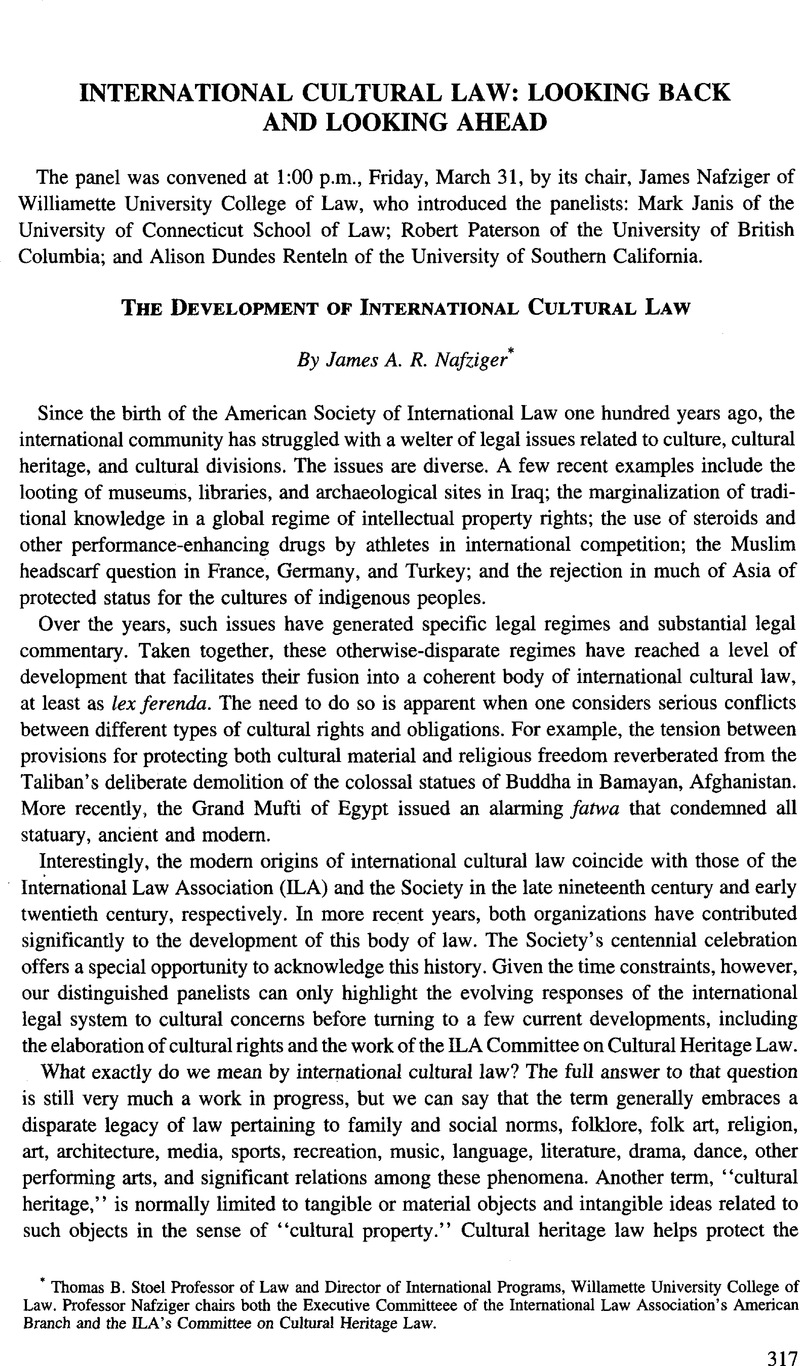Published online by Cambridge University Press: 28 February 2017

1 Root, Elihu, The Real Question Under the Japanese Treaty and the San Francisco School Board Resolution, 1 AJIL 273 (1907)Google Scholar.
2 See the excellent historical survey of the AJIL in Bederman, David J. Appraising a Century of Scholarship in the American Journal of International Law, 100 AJIL 20 (2006)CrossRefGoogle Scholar.
3 Janis, Mark, Religion and International Law XIII (2d ed. 2004)Google Scholar.
4 As Richard Shweder has asked:
Do we want to turn culture into a legally protected resource? Is cultural heritage something that ought to be owned, patented, copyrighted, trademarked, licensed, exclusively controlled or treated as the private property of particular ethnic groups? What are the risks to a liberal pluralistic democratic society when ethnic groups are empowered with group rights? Does the assertion of cultural ownership by indigenous peoples threaten the public domain? Does it hazardously restrict that region of our open society—the intellectual and social commons—where members of different traditions can meet, mix, creatively invent hybrid cultural forms and do so freely and without bureaucratic surveillance? ... What about the disempow-ered forest-dwelling pygmies of Central Africa? Is there a meaningful modern sense in which they can be said to own their traditional flute music and distinctive form of yodeling, traces of which have diffused throughout the globe and can be detected in Herbie Hancock’s album “Headhunters” and Madonna’s “Bedtime Stories”? Should the pygmies be compensated? Why and how? What are our legal responsibilities under such circumstances? What are our moral responsibilities?
Richard A. Shweder, Book Review, N.Y. Times, Sept. 14, 2003, §7, at 13.
5 Renteln, Alison Dundes, The Cultural Defense 11, 219 (2004)Google Scholar.
6 Janis, Mark, Remarb, 92 ASIL Proc. 384 (1998)Google Scholar.
7 Robert K. Paterson Et Al., International Trade and Investment Law in Canada 11-16 (1995).